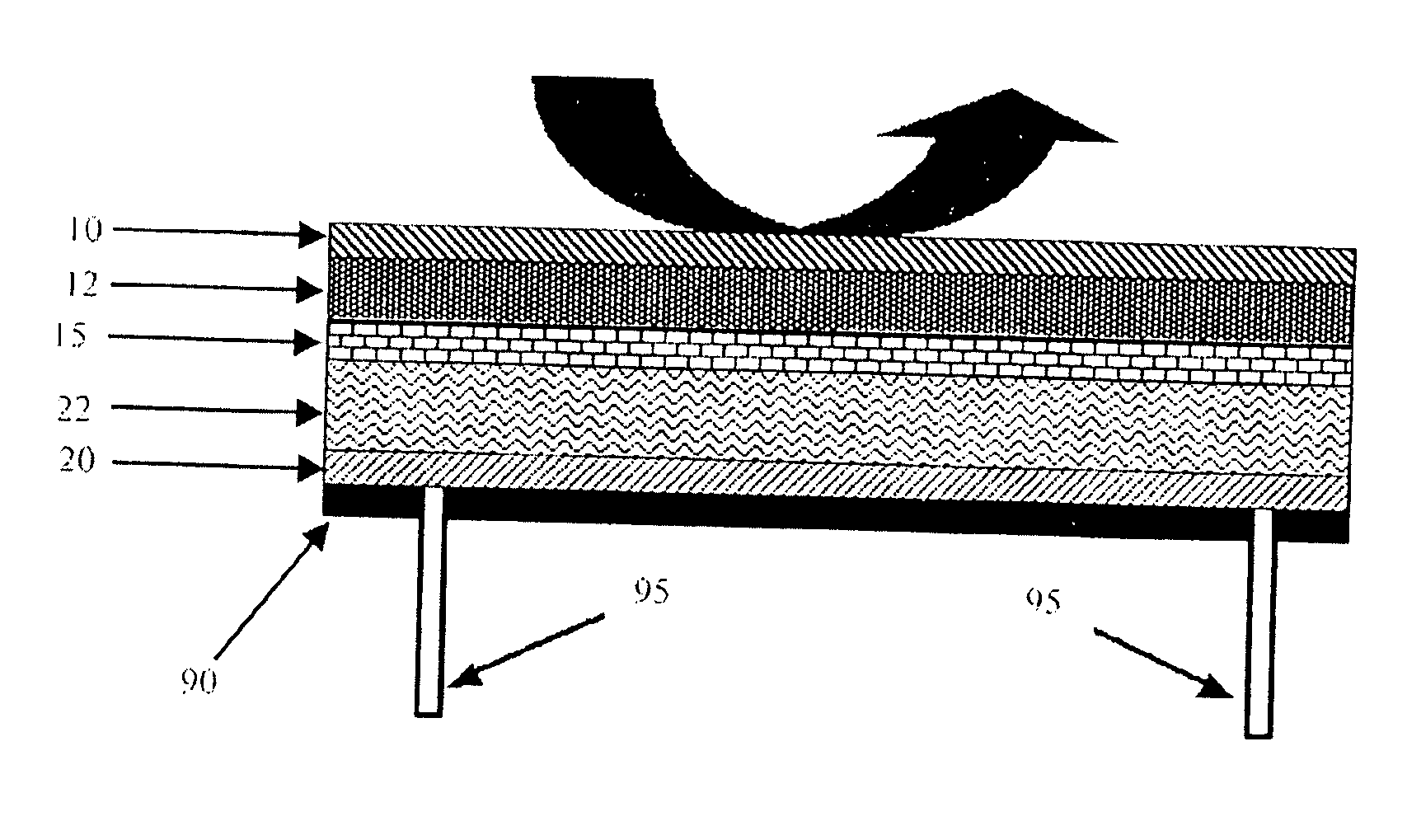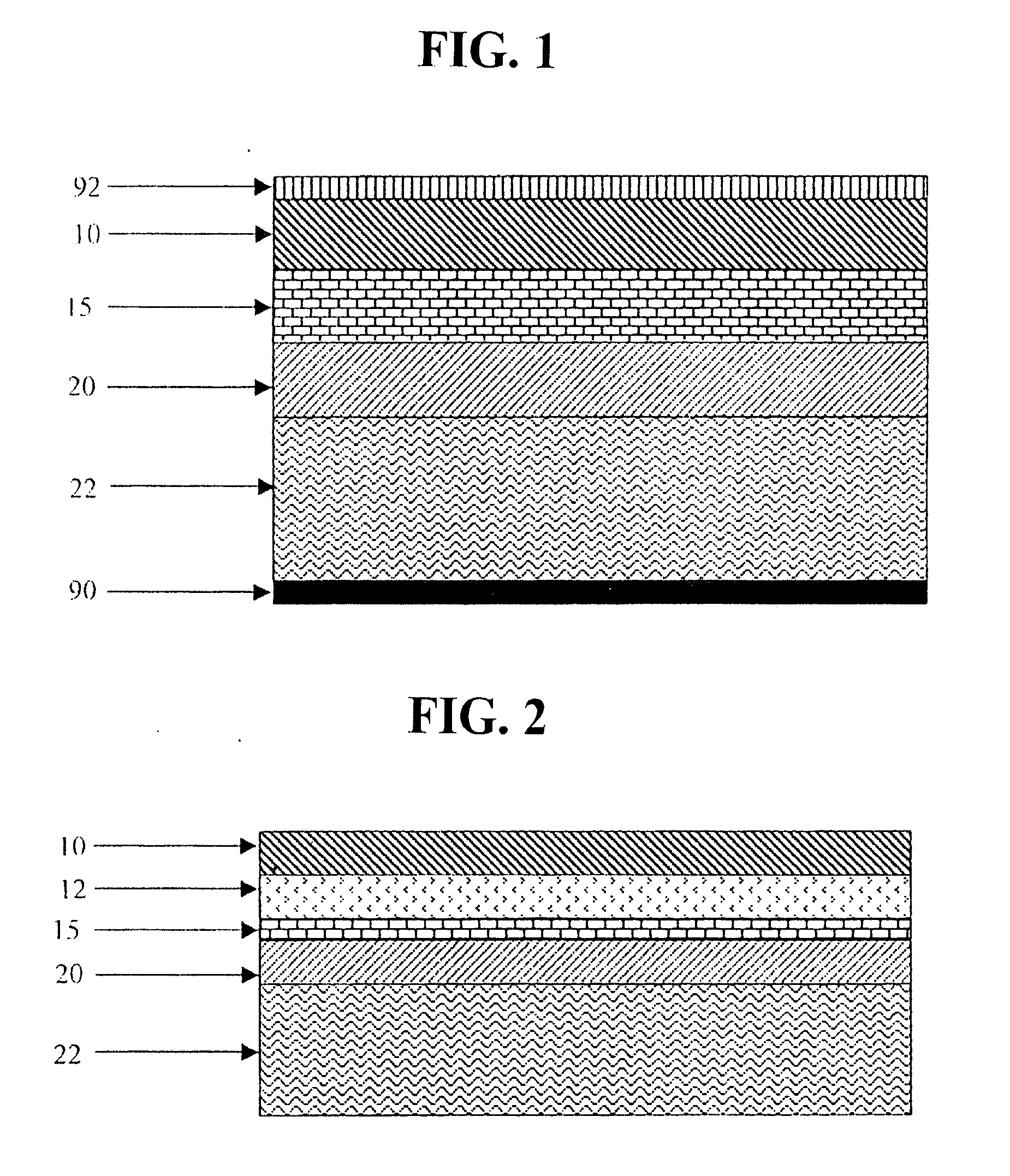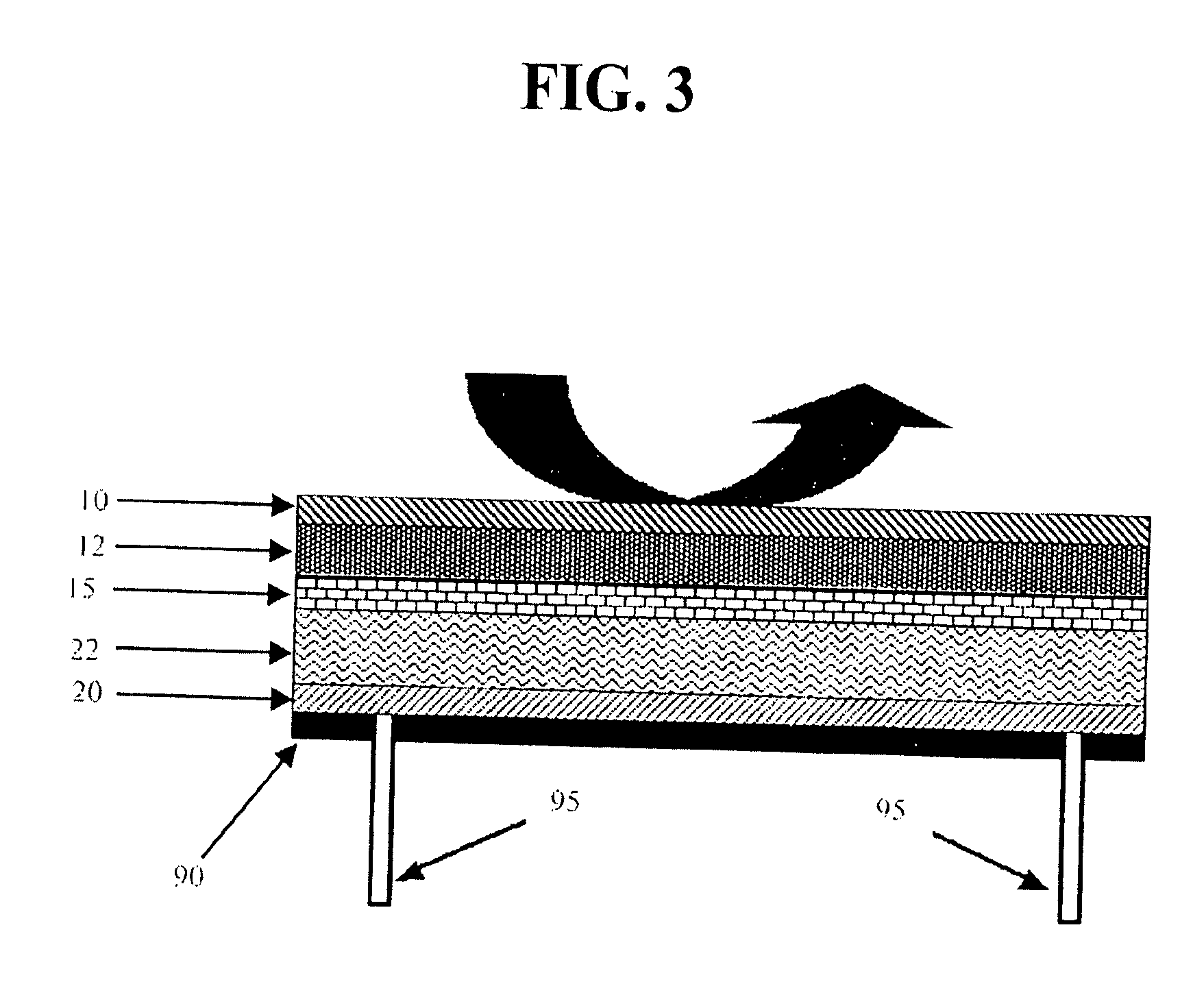Hybrid Power Strip
a hybrid fuel cell and power strip technology, applied in the direction of fuel cells, reactant parameters control, electrochemical generators, etc., can solve the problems that biofuel cells have so far been incapable of meeting the power requirements of common consumer electronics, and achieve the effect of prolonging the charge of conventional batteries
- Summary
- Abstract
- Description
- Claims
- Application Information
AI Technical Summary
Benefits of technology
Problems solved by technology
Method used
Image
Examples
example
Power Strip Prototype
[0029]A power strip prototype having an area of approximately 2 cm2 was built and demonstrated to generate electricity from glucose using glucose oxidase as the anodic enzyme. The configuration corresponds to that shown in FIG. 2 with the exception that locations of anode matrix 20 and anolyte solution 22 are reversed. The power strip generated a peak power of 7 μW at a voltage of about 175 mV. The current and power are found to be stable with time. A polarization curve, current vs. time, and power vs. time for the prototype are shown in FIG. 4 A-C.
PUM
| Property | Measurement | Unit |
|---|---|---|
| distance | aaaaa | aaaaa |
| surface area-volume ratios | aaaaa | aaaaa |
| pH | aaaaa | aaaaa |
Abstract
Description
Claims
Application Information
 Login to View More
Login to View More - R&D
- Intellectual Property
- Life Sciences
- Materials
- Tech Scout
- Unparalleled Data Quality
- Higher Quality Content
- 60% Fewer Hallucinations
Browse by: Latest US Patents, China's latest patents, Technical Efficacy Thesaurus, Application Domain, Technology Topic, Popular Technical Reports.
© 2025 PatSnap. All rights reserved.Legal|Privacy policy|Modern Slavery Act Transparency Statement|Sitemap|About US| Contact US: help@patsnap.com



